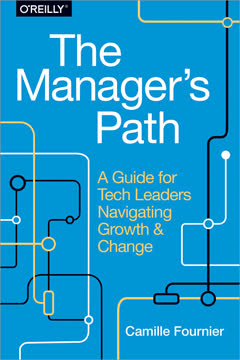Key Takeaways
1. Understand the System: Read the Manual and Know Your Tools
"Only the spoon knows what is stirring in the pot."
Know your system inside out. This means thoroughly reading the manual, understanding the road map of how components interact, and mastering your debugging tools. Familiarity with the system's normal behavior helps you spot abnormalities quickly. Don't just skim the surface; dive deep into the documentation, including application notes and implementation guides.
Master your tools. Understand the capabilities and limitations of your debugging instruments. Whether it's oscilloscopes, logic analyzers, or software debuggers, knowing how to use them effectively can make or break your debugging process. Remember to test your tools before use – a faulty instrument can lead you down the wrong path.
- Read everything cover to cover
- Know what's reasonable behavior for the system
- Understand the system's architecture and component interactions
- Master debugging tools and their limitations
2. Make It Fail: Reproduce the Problem Consistently
"Do it again."
Reproduce the failure reliably. The key to solving a problem is being able to make it happen consistently. This allows you to observe the failure in detail and test potential fixes. If the problem is intermittent, work on making it occur more frequently by identifying and controlling the conditions that trigger it.
Document the failure sequence. Write down each step that leads to the failure, including any relevant environmental factors. This not only helps you reproduce the problem but also provides valuable information for others who might assist in debugging. Be as specific as possible about the conditions under which the failure occurs.
- Start from a known state when reproducing the problem
- Automate the failure sequence if possible
- Don't simulate the failure; stimulate the conditions that cause it
- Use easy-to-spot test patterns to make subtle failures more obvious
3. Quit Thinking and Look: Observe the Actual Failure
"See the failure."
Observation trumps speculation. Instead of theorizing about what might be causing the problem, focus on directly observing the failure as it happens. Use your debugging tools to capture and analyze the actual behavior of the system at the point of failure. This approach prevents you from fixing imaginary problems or overlooking the real issue.
Look for unexpected behavior. Pay attention to any deviation from normal operation, no matter how small. Sometimes, the key to solving a complex problem lies in a subtle anomaly that's easy to overlook. Don't dismiss unusual observations just because they don't fit your initial theories.
- Use instrumentation to see what's really happening
- Look at low-level details of the failure
- Be prepared to dive deep into the system to observe the problem
- Don't ignore unexpected observations, even if they seem unrelated
4. Divide and Conquer: Narrow Down the Problem Systematically
"Narrow the search with successive approximation."
Systematically isolate the problem. Use a binary search approach to quickly narrow down the location of the issue. Start by dividing the system in half and determining which side contains the problem. Repeat this process, continually halving the search space until you've pinpointed the source of the failure.
Follow the data flow. Trace the path of data or signals through the system, checking at each stage to see where things go wrong. This approach is particularly effective for complex systems with multiple components or processing stages. Always move from known good points towards the failure point.
- Use binary search to quickly locate the problem area
- Check intermediate points in the system to isolate the failure
- Start with the bad end and work upstream
- Fix known bugs first to get a clearer picture of the remaining issues
5. Change One Thing at a Time: Isolate Variables to Pinpoint the Cause
"Use a rifle, not a shotgun."
Methodical experimentation is key. When trying to identify the cause of a problem, change only one variable at a time. This approach allows you to clearly see the effect of each change and avoid confusing the results. If a change doesn't solve the problem, revert it before trying something else.
Control all variables possible. In complex systems, many factors can influence behavior. Try to control as many variables as you can, changing only the one you're testing. This scientific approach helps isolate the true cause of the problem and avoids misleading results from unintended interactions.
- Make one change, test, then revert if it doesn't fix the problem
- Control all other variables when testing a change
- Compare with a known good system or state to isolate differences
- Be aware of unintended consequences from multiple simultaneous changes
6. Keep an Audit Trail: Document Everything You Do and Observe
"Write down what you did, in what order, and what happened."
Detailed documentation is crucial. Keep a thorough record of everything you do during the debugging process, including changes made, tests performed, and results observed. This audit trail helps you avoid repeating unsuccessful attempts and provides valuable information for others who might assist in solving the problem.
Correlate events and symptoms. When documenting observations, include precise timing information and correlate symptoms with other events in the system. This can help identify patterns or relationships that might not be immediately obvious. Be specific about the nature and duration of symptoms.
- Write down every step and observation, no matter how trivial it seems
- Include precise timing information with observations
- Correlate symptoms with other system events
- Use consistent and specific terminology in your documentation
7. Check the Plug: Question Your Assumptions and Test the Basics
"Is it plugged in?"
Never assume the basics. Even experienced debuggers can overlook simple issues. Always start by checking the most fundamental aspects of the system, such as power connections, correct software versions, and proper configuration settings. These basic checks can often reveal the root cause of seemingly complex problems.
Question your assumptions. Regularly challenge your beliefs about how the system works or what might be causing the problem. Assumptions can blind you to the real issue, especially when dealing with unfamiliar systems or unexpected failures. Be open to the possibility that your initial understanding might be incorrect.
- Start with the most basic checks, no matter how obvious they seem
- Verify that all components are properly connected and configured
- Challenge your assumptions about how the system should work
- Test your debugging tools to ensure they're functioning correctly
8. Get a Fresh View: Seek Help and Report Symptoms, Not Theories
"Nothing clears up a case so much as stating it to another person."
Leverage collective expertise. Don't hesitate to ask for help when you're stuck. A fresh perspective can often spot things you've overlooked or suggest new approaches. Seek out colleagues, experts, or even online communities relevant to your problem. Their diverse experiences and knowledge can be invaluable.
Report symptoms, not theories. When describing the problem to others, focus on the observed symptoms and behaviors rather than your theories about the cause. This allows others to form their own unbiased opinions and prevents them from being led down potentially incorrect paths by your assumptions.
- Seek help from colleagues, experts, or online communities
- Describe the problem objectively, focusing on observed symptoms
- Be open to suggestions and alternative perspectives
- Use the process of explaining the problem to clarify your own understanding
9. If You Didn't Fix It, It Ain't Fixed: Verify the Solution Thoroughly
"Check that it's really fixed."
Rigorous verification is essential. Once you believe you've fixed the problem, test thoroughly to ensure the solution is real and complete. Reproduce the original failure conditions and verify that the problem no longer occurs. Also, test related functionality to ensure your fix hasn't introduced new issues.
Understand the root cause. Don't be satisfied with a fix that works but isn't fully understood. Dig deeper to comprehend why the problem occurred and why your solution addresses it. This understanding helps prevent similar issues in the future and ensures the fix is robust.
- Reproduce the original failure conditions to verify the fix
- Test related functionality to check for unintended consequences
- Remove the fix and confirm the problem returns
- Reapply the fix and verify it solves the problem consistently
- Document the root cause and the reasoning behind the solution
Last updated:
Review Summary
Debugging receives mostly positive reviews for its practical advice on troubleshooting systems. Readers appreciate the book's concise, humorous style and the nine debugging rules presented. Many find the principles useful across various technical fields. Some criticize the dated examples and hardware focus, suggesting it could benefit from an update. The book is praised for its systematic approach to debugging and is recommended for both experienced and novice engineers. However, a few readers find it too long or difficult to follow in parts.
Similar Books










Download PDF
Download EPUB
.epub digital book format is ideal for reading ebooks on phones, tablets, and e-readers.




